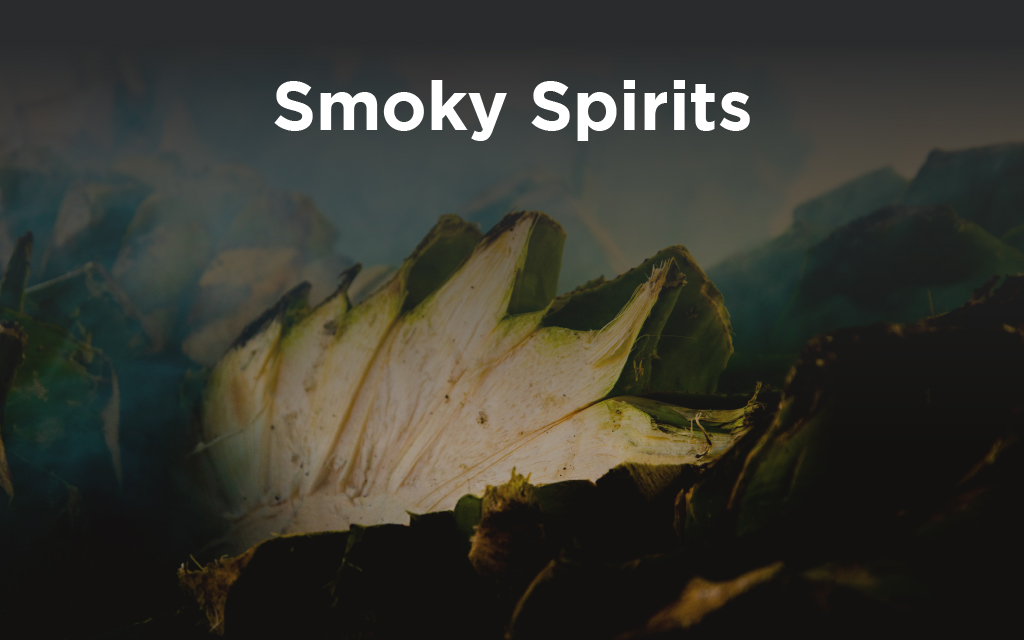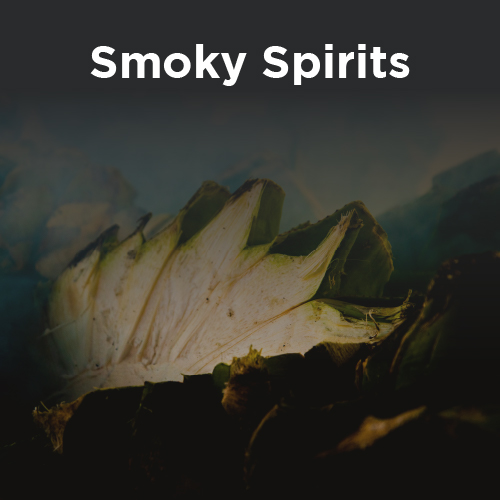
MIXOLOGY TALK PODCAST #184
We’re rounding up our smoky cocktails month talking about the spirit we probably all think of when we think smoke in cocktails: mezcal! Mezcal is great because it doesn’t require any special equipment or techniques to add a smoky effect to your drink. Today, Chris is chatting with the founder of IZO Mezcal and all-around mezcal expert, Gaston Martinez, about this unique agave spirit. If you’ve never tried it, I guarantee you’ll want to after listening to today’s podcast!
Click here to Subscribe on your Smartphone and never miss an Episode!
On your iPhone:
Look for the iPhone’s default “Podcasts App”. It may already be there, or you may need to download it. It looks like this:
- In the app, click “Search” in the bottom-right corner and search for “Mixology Talk Podcast“
- Click on the icon under the “Podcasts” section, and in the next screen click the purple “Subscribe” button.
Note:If you prefer, you can also subscribe using the “Stitcher” app, also free & available in the App store.
On your Android Phone:
Download the “Stitcher” app from the Play store by searching for “Stitcher”
- Click on the “Search” icon and search for “Mixology Talk Podcast
- Click “+” to add the show to your Playlist.
Watch Now:
INTERVIEW HIGHLIGHTS:
- 2:45– What is mezcal? (Go to minute 4:09 to hear about the fascinating process!)
- 11:22– How does Gaston recommend drinking mezcal?
- 14:38– Best cocktails with mezcal
- 18:48– What should you know about mezcal?
- 23:50– What mezcal means to Gaston (check out what’s to come for IZO at min. 26:10)
MEET GASTON!
Gaston Martinez is the Founder and CEO of IZO, which sustainably produces a collection of premium, handcrafted agave spirits according to centuries of tradition in the heart of Durango, Mexico. A native of Durango, Martinez created the IZO brand to carry out his lifelong vision of preserving the legacy of pure, all-natural Mezcal for which his hometown is known. “In my family and culture, Mezcal was a symbol of celebration and the pure enjoyment of life,” explains Martinez. Now, alongside a team of hand-picked local talent, he proudly shares the experience of an award-winning Mezcal – the first of many IZO fine, handcrafted agave spirits – with the world beyond Durango. Made sustainably from slow-roasted, wild agave hearts harvested on local ranches, every sip of IZO Mezcal speaks to generations of Mezcaleros bringing people together around shared values of community, celebration, and savoring the reward of a job well done. Every aspect of IZO pays respect to its point of origin, from the locally-sourced Onyx stopper featured atop the bottle, to the elegant, minimalist design that allows the flavorful spirit within to shine. The smooth, sophisticated taste of IZO Mezcal tells the story of centuries’ old Mexican tradition and of one man’s vision to share it with the world. Learn more about the IZO collection of sustainably handcrafted agave spirits at IzoMezcal.com
WHAT IS MEZCAL ANYWAY?
Mezcal literally translates to “oven-cooked agave,” so that should give you a hint about the essence of mezcal. Gaston talks a great deal about the process of making mezcal, but roasting the agave plant is the starting point. Mezcal is a very unique, layered, smoky spirit that takes a lot of patience and passion to make (more on that in a minute).
According to Gaston, there are only 9 states in Mexico that can produce mezcal. Much like wine, the type of mezcal you get is based on a few things:
- Region (where in Mexico it’s made)
- The type of agave used: There are so many different agave plants
- The distillery’s style
“Mezcal is the most complex spirit there is on the market right now. Nobody else can come close with what we are doing.” –Gaston Martinez
WHAT IS THE DIFFERENCE BETWEEN MEZCAL AND TEQUILA?
Wait, isn’t tequila made from agave? Why yes, it is! Tequila is actually a type of mezcal, and while we could write a whole article about their difference, here are the main two distinctions:
- Tequila is made from steamed agave while mezcal is made by roasting the agave, accounting for a significant difference in flavor.
- Mezcal can be made from a wide variety of agave plants, but tequila can only be made from one variety: the blue agave
HOW DOES MEZCAL GET ITS SMOKY FLAVOR?
The distinct smoky flavor that people associate with mezcal comes from that roasting process I mentioned. So if you’re looking for a smoked cocktail without the work of smoking a glass or individual ingredients of the drink, using mezcal as your base spirit is an excellent alternative.
Using a mezcal like IZO also helps give a flavor of smoke without making your cocktail taste like licking a barbecue (no thanks). As Gaston explains,
“I like the smoke part in our mezcal, but I don’t want to be overwhelmed or overpowered. Because sometimes you find mezcals that actually just take away the rest, and you just taste the smoke. […] We want to integrate the smoke in the rest of the elements of mezcal.”
PROCESS: SMOKING AGAVE FOR MEZCAL
Like I alluded to before, making mezcal takes a lot of time. That’s because the agave has to grow for 8 to 10 years before it can be harvested. Years! And then you can actually make the spirit, which is not a quick process itself. Gaston describes what this looks like at their distillery:
“It takes between 8 and 10 years to be able to be harvested. It’s a long process. And we only use wild agave; that means, you know, our jimadores go to the mountain and take a week or so, and then they bring back the batch of agaves, and then we go through the process. […] We cook agave in a volcanic fire pit. […] We have these volcanic rocks that we cover the fire pit [sic] to kind of preserve the heat of the wood that we’re actually using.”
Let’s break down the process of making mezcal a little further:
- The jimadores (agave farmers) set out to find the wild agave and then chop it down into 2-3 more manageable pieces.
- At IZO, they only use oak wood, which they find rather than getting from chopping down trees.
- They dig a pit in the ground and place the oak wood in the fire pit first, covering the wood with volcanic rock.
- The fire they build burns out a bit, but the heat stays in the rock.
- They place the agave on top of the rock, covering it with 1) agave fiber (left over from previously ground-up agave), then 2) a 100% cotton blanket and finally 3) dirt.
- Now the agave sits like that for 4-5 days! This allows the agave to cook with the steam that is trapped underneath the fibers, blanket, and dirt.
- After that, they can begin the distillation process.
And that is how mezcal gets its smoky flavor; the agave is covered, so there is nowhere else for the smoke to go except into the heart of the agave. As Chris explains,
“You essentially are creating this big earthen oven; you still have the oak in there, you’re kind of covering it with the volcanic rock to insulate it basically, keep all that heat in. I imagine that’s where a lot of the smoke element of mezcal comes from; there’s nowhere for that smoke to go, so it kind of just gets permeated right into the agave itself.”
THE IMPORTANCE OF WILD AGAVE IN MEZCAL
Have you ever taste-tested a farmed raspberry against a wild raspberry? Yeah, me neither; but if you’ve had both at some point in your life, you’ll know that there is really no comparison: the wild berry is infinitely better tasting. And the same is true for agave. There is something about a plant that has to struggle a little and grow on its own that makes the flavors much richer.
But what happens if we use up all that wild agave? I mean, it takes 8-10 years to grow before it can be harvested, and the demand for mezcal is certainly on the rise. Don’t fret! Gaston touches on the importance of respecting nature and making sure their team at IZO gives back. They farm-grow agave for 2 years and then replant it in the wild so it can grow naturally the remaining 6-8 years.
HOW TO ENJOY MEZCAL: FROM MEZCAL NEAT TO MEZCAL COCKTAILS
OK, so now you’re sold on trying mezcal (if you haven’t already had the pleasure) or you’re looking for new ways to enjoy it. Let’s start with Gaston’s simple recommendation: Sip it!
“Let the mezcal take you and get that expression on your palette, of all the things behind that little sip of mezcal you just had: the 10 years in the making, the region, and the process and all that.” –Gaston Martinez
The traditional way to drink mezcal in Mexico is not to mix it with anything. You can serve it neat, on the rocks, or straight up (my personal favorite for a little chill without too much dilution); if you have a slice of orange, go ahead and throw that in there. If you’re looking for even more flavor, Gaston recommends drinking your mezcal with Tajín on the side.
But what if you’re looking for a mezcal cocktail? Here are some of Gaston’s and Chris’ favorite cocktails to make with mezcal:
- Mezcal Negroni
- Old Fashioned with mezcal instead of whiskey
- Skinny margarita, substituting mezcal for the traditional tequila– and if you’re like me and love spice, muddle up some Serrano or jalapeño peppers
- Cucumber margarita (so refreshing!)
- Carajillo, a traditional Mexican coffee drink with Licor 43 that would go well with a splash of mezcal
- The Last Word, replacing the gin with mezcal for a layered smokiness
READY TO ENJOY A SMOKY MEZCAL COCKTAIL?
IZO is expanding beyond mezcal and launching many new products, so make sure to follow them on social media for all their newest updates. And definitely order your own bottle of IZO mezcal with Gaston’s generous discount code IZOFAM20 for 20% off.
For Gaston, the best thing about mezcal is the sensory experience it brings, reminding him of celebrations with family and friends where everyone enjoyed mezcal. So what memories will you make? Share your mezcal cocktails with us in our Facebook group, and don’t forget to hop over to our shop to grab all the tools you’ll need to make your delicious, smoky cocktails.WOODS YOU CAN USE FOR INTRODUCING SMOKE INTO COCKTAILS:
Was this Podcast helpful? Click Here to Give us a Rating in iTunes!
Then click “View in iTunes” under the Podcast Image on the left and enter your rating on the “Ratings and Reviews” tab in iTunes.
Thanks!
Your reviews really matter – they help more people find us in iTunes and help us improve this Podcast!




